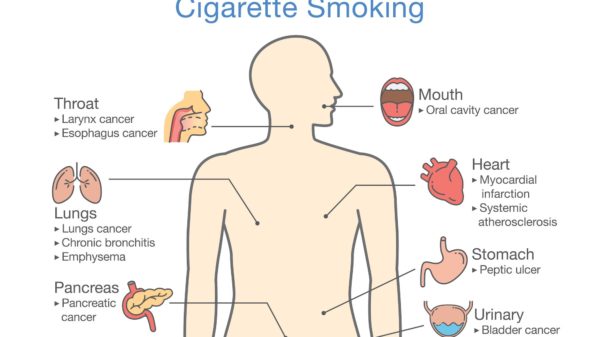According to the U.S. Food and Drug Administration, nearly 58 million non-smokers are affected by others’ cigarette smoke. And these non-smokers, including children, may not be the only ones who feel smoke’s second-hand and third-hand effects—smoking around pets can also be harmful.
Pets can inhale and ingest the various chemicals found in cigarette smoke—among them, arsenic, carbon monoxide, formaldehyde, lead, benzene, and nicotine—through the air, licking their fur and coats, and other means. There are steps pet owners and others smoking around animals can take to prevent harmful cigarette smoke, and even vaping liquids, from hurting pets.
The Influence of Smoking on Pets
Pets can be even more susceptible to cigarette smoke’s harmful effects, due to their grooming habits and the likelihood that they are home more than humans, which is especially true for indoor pets. In addition to smoking around dogs and smoking around cats, smoking around other animals can hurt them too. Pets can also ingest harmful chemicals found in cigarettes and their smoke, which include the following:
- Ammonia
- Arsenic
- Benzene
- Carbon monoxide
- Formaldehyde
- Hydrogen cyanide
- Lead
- Mercury
- Nicotine
- Toluene
- Uranium-238
Second-Hand and Third-Hand Smoke Around Pets
Pets can breathe in second-hand smoke through their lungs. If smoking around dogs, they can experience sinus problems. Long-nosed dogs are more likely to experience sinus problems than short- or flat-nosed dogs. For the latter type of dogs—including Pugs, Bulldogs, Beagles, and Brittany Spaniels—they have a higher risk of getting lung cancer. With their short noses, they have less defenses to filter smoke’s particles, which instead can go directly to their lungs.
Studies have also found that cats who live with smokers have a two- to four-times increased risk of developing oral squamous cell carcinoma, an aggressive mouth cancer. If pets eat cigarette butts lying around, they can also contract an illness and eventually die.
Third-hand smoke can fall onto the fur of certain animals that may be kept as pets, including ferrets, rabbits, mice, guinea pigs, hamsters, and chinchillas, in addition to dogs and cats. These pets may also lick their owners’ skin or other clothes that contain chemical particles found in cigarettes.
However, even non-furry animals—such as birds, lizards, turtles, hermit crabs, and even fish—can be affected. These animals can also breath in toxic chemicals found in cigarette smoke. As nicotine is water soluble, it can infect the water in a fish tank and eventually poison the fish. Nicotine can also cause muscle spasms, rigid fins, color loss, and even death in fish. In one experiment, scientists placed the butt of a smoked cigarette into a fish tank that contained two-week old fathead minnows, and 50% of these fish died within 5 days.

It is also important for pet owners who do not smoke but may walk their dog or other animal outside to check the area and watch their pet to ensure the pet does not eat any scattered cigarette butts. This can also apply to dog walkers who may not be pet owners themselves.
Vaping and Pets’ Health Risks
It is not just cigarette smoke that can harm pets. Vaping and the juices from electronic cigarettes and other devices also pose a risk to them. If a pet eats an electronic device’s cartridge and ingests the nicotine from it, the pet can get sick and die.
However, if pet owners vape responsibly, vaping can be significantly less harmful than cigarettes when smoking around animals. In fact, vaping can be up to 95% less harmful than cigarette smoke. Dogs may chase the “smoke” that comes out of vaporous devices, and this often contains propylene glycol. This propylene glycol is found in some dog foods, thus its harmful effects may be minimal to dogs, though this is still a subject of debate.
However, if vaping around cats, the vegetable glycerin found in many vape liquids and “smoke” can be quite harmful to them, so it is best not to vape directly around cats and blow the “smoke” towards them or in their faces.
Symptoms of Pet Poisoning
As with any toxic substance, cigarettes, their smoke and related chemicals found in them can harm a plethora of pets, including cats, dogs, and even non-furry animals. If one suspects a beloved pet or pet they are watching has ingested nicotine or other harmful chemicals from cigarettes, due to smoking around animals, or an electronic device, they should thoroughly check an animal’s mouth. The person should assess the pet’s gums and tongue to see if anything looks different or potentially harmful. If the gums or tongue turn completely or partially blue, purple, white, dark red, or quite a bright red, the person should seek out immediate medical attention from a veterinarian.
There are other signs and symptoms one should check for to see if a pet has indeed ingested toxins and is at risk of poisoning:
- Pet does not want to eat or has lost their appetite
- Higher pulse rate
- High temperature
- Vomiting
- Diarrhea
- Panting
- Seizures
- Lethargy
- Bloody stool
- Nosebleeds
If any of these signs or symptoms are present and the person is unable to get in touch with a veterinarian, they should see if there is a local pet poisoning helpline and contact it immediately. They can also check if there is a local pet hospital that is open and immediately take the pet in.
Simple Tips to Protect Pets
Nicotine poisoning in dogs, cats and other animals can happen at a dose as low as 1 milligram per kilogram of body weight. The median dose that is lethal is 9.2 milligrams per kilogram of body weight. A cigarette usually contains 9 to 30 milligrams of nicotine. The toxin is most concentrated in the cigarette’s butt, thus why animals are at a high risk of poisoning if they ingest a used cigarette butt.
For electronic devices, their cartridges can contain 6 to 24 milligrams of nicotine, thus they are at a very high risk of nicotine poisoning if they ingest one. Nicotine levels as low as 5 milligrams can be harmful to cats and dogs as well.
If someone is both a pet owner and smoker, they can take preventive or corrective measures to prevent their pet from being harmed by smoke’s chemicals and toxins.
How to Avoid Pet Poisoning
To protect animals from problems caused by smoking around pets, owners and others can take precautionary steps to prevent illnesses, nicotine poisoning, and possible death.
Pet owners who smoke can keep their smoking outside, and immediately change and wash any clothes exposed to smoke. If an owner already has a smoking habit that has been inside and infected furniture, they can clean the home and furniture found inside, which involves steam cleaning carpets, curtains and any upholstery to rid it of smoke’s harmful chemicals and toxins.
They should also keep cigarettes, especially smoked and used butts, out of pets’ reach and prevent pets from eating them if found outside. It is also advised that smoke and vapors from electronic devices not be blown around pets or into their faces.
What One Should Do in Case of Pet Poisoning
Nicotine poisoning has actually become more common with the rise in people using electronic devices that contain nicotine, and pets’ ability to ingest these devices and their nicotine-containing liquids. In addition to these devices and cigarettes, nicotine can be found in gums, lozenges, candies, snuff, cigars chewing tobacco, nicotine patches and nicotine inhalers.
While one may take many precautionary and preventive measures, accidents do happen, and pets can be exposed to nicotine and other chemicals found in cigarettes and electronic devices. Fortunately, there are measures that can be taken if there is nicotine poisoning in dogs, cats, or other pets.
Nicotine usually shows signs of poisoning in pets within one hour of exposure. Nicotine gums, lozenges or candies may also have the ingredient xylitol, a sweetener which can be toxic to dogs. Cats can also be poisoned by nicotine. Poisoning from this toxin usually has moderate or severe effects in animals.
If one suspects a cat, dog, or other pet is experiencing symptoms of nicotine poisoning, they can look out for the following signs:
- Vomiting
- Abnormal heart rate
- Incoordination
- Tremors
- Weakness
- Collapse
If a pet ingests nicotine, signs or symptoms usually occur within 15 to 90 minutes, so exposure can be quickly assessed. If it happens, the person should immediately seek the advice of a veterinarian, pet helpline, or pet hospital for advice and treatment.
It is also important to let the veterinarian know if there are nicotine products in the home so the doctor can properly assess any causes of the poisoning. The veterinarian is likely to induce vomiting to minimize the nicotine ingested in the pet’s body. The doctor may also manage convulsions and treat any heart or blood issues. The doctor will also ensure the pet is breathing okay.
The pet’s likelihood of survival is highest if the pet is treated quickly and nicotine exposure is low. If the pet is stabilized within four hours of ingesting nicotine, they have the best chance of getting better and surviving.
Smoking has many harmful effects for both humans, including adults and children, and pets. Among its laundry list of diseases are asthma, lung and other cancers, chronic obstructive pulmonary disease, and heart disease.
The chemicals and toxins found in cigarettes can cause illnesses, cancers and even death in pets. Pets are also susceptible if they directly eat a cigarette butt a pet owner or other person may have left lying around or littered outside.
Poisoning can also occur, so owners and pet watchers should check pets’ mouths for symptoms and note if they experience other signs, such as vomiting, diarrhea and seizures. If any of these or other symptoms are occurring, the person should immediately contact a veterinarian, local pet poisoning helpline or pet hospital for advice or treatment.
To protect pets, cigarette smokers can keep from smoking inside so their pets do not breathe in the fumes and toxins from second-hand smoke. Owners should also ensure their pets are not exposed to chemicals from third-hand smoke that may be trapped in clothing, furniture and other particle-containing items.
Quitting cigarettes or switching to vaping can reduce these harmful effects, and there are resources and support networks available for interested persons. Even when vaping, it is important to take precautions to ensure the liquid, vapors and nicotine contained in cartridges do not harm pets or other animals that may be around.








